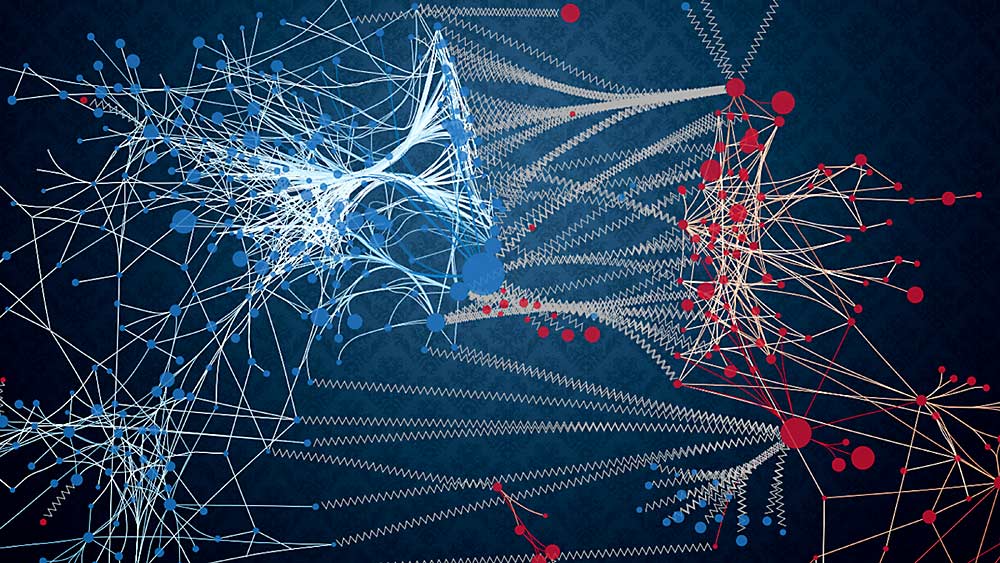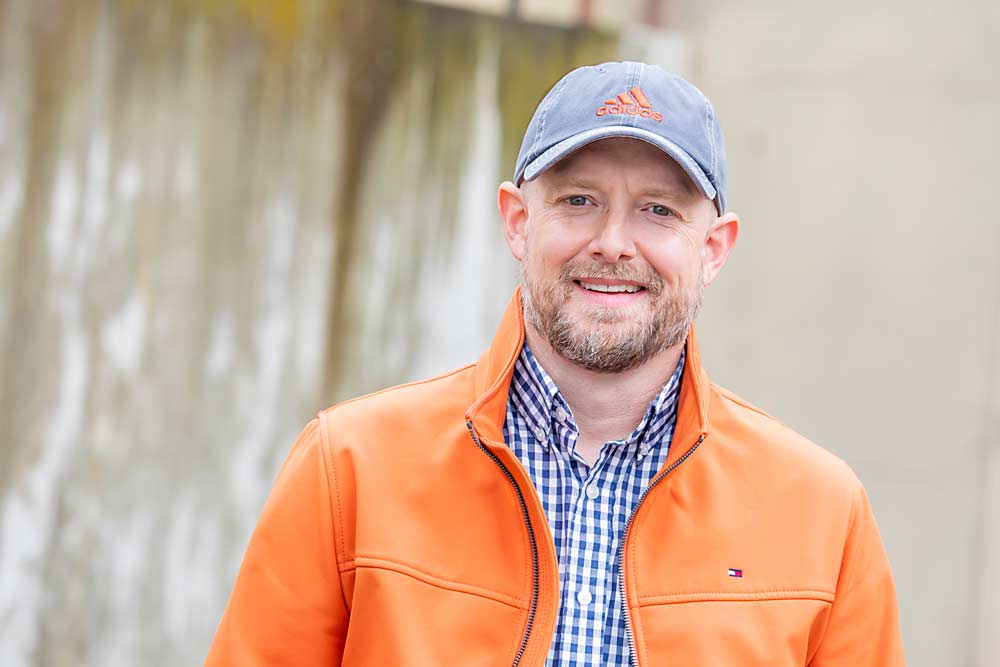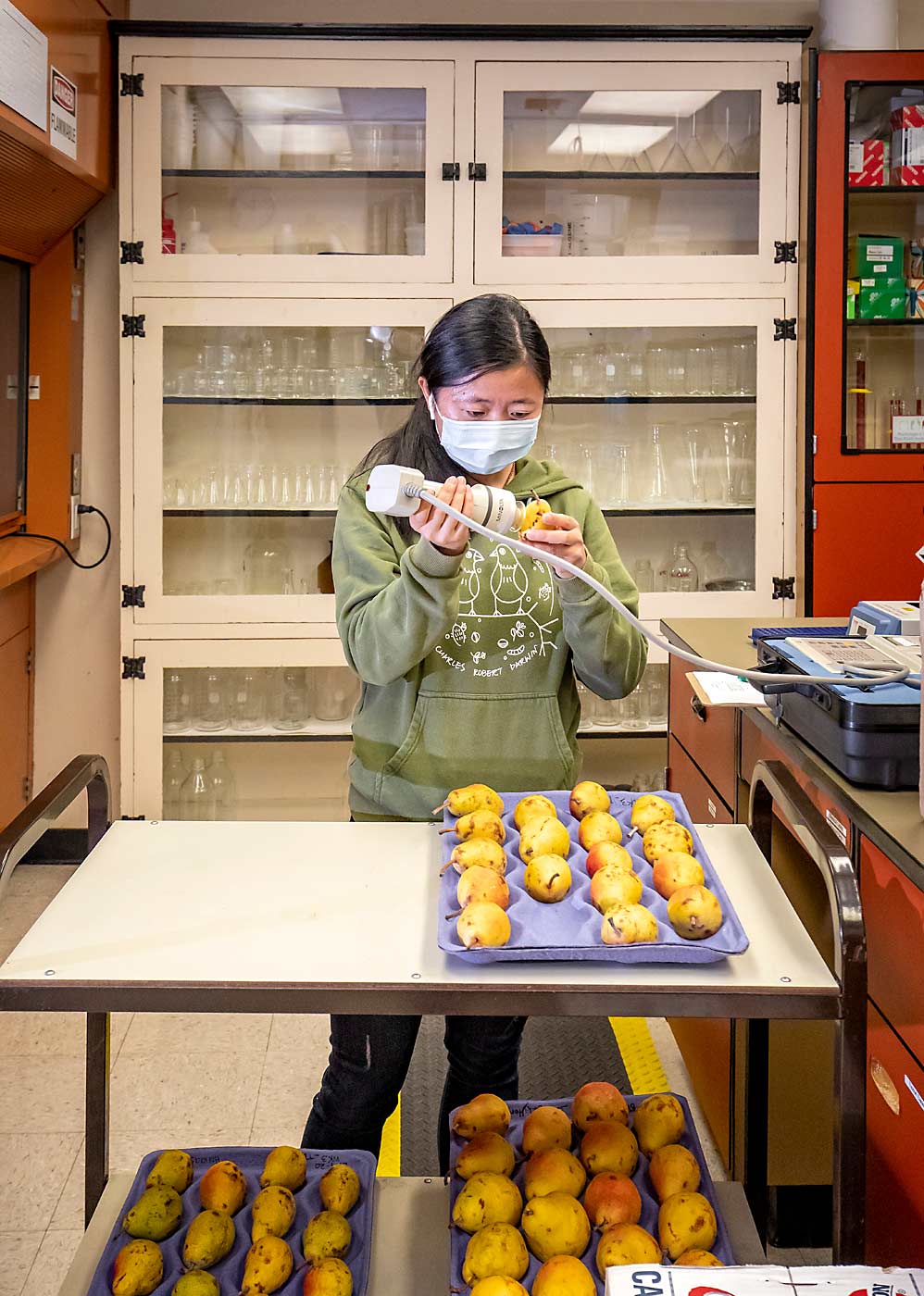
How does an apple know how old it is?
That may sound like a frivolous question at first glance, but consider this: Fruit maturity is fundamental to decisions on everything from harvest timing to marketing window. That’s why researchers at the U.S. Department of Agriculture in Wenatchee, Washington, want to understand the genetic underpinnings of apple and pear maturity.
“All the apples on the tree know when fall is coming,” said USDA molecular biologist Loren Honaas. “We know they all know when to get ready to ripen, but it happens at different times. What makes an early apple versus a late apple? Where is this apple in its lifetime?”
Those are the types of essential science questions Honaas joined the USDA’s Agricultural Research Service in 2016 to tackle, with his experience in a field known as functional genomics.
Functional genomics links a gene to a trait, but on a big scale because fruit maturity is a complex process controlled by many genes, Honaas said. By comparing enormous datasets of the genetic activity (including which genes are being translated into proteins) at different stages of fruit maturity, computer models can identify patterns of the key genes involved throughout the physiological process.
Those patterns may then yield predictive tools to help the industry make better storage or market decisions, or breed fruit resilient to senescence disorders, said postharvest physiologist Jim Mattheis, the research leader at ARS’s Wenatchee lab.
“The techniques to do this are very complicated, but the goal is really to provide better tools to the industry,” he said.
On the applied science side of the effort, researchers aim to see if it’s possible to develop an apple maturity index that could apply across cultivars, based on the gene activity signature, and attempt to determine why some Anjou pears need ethylene conditioning to trigger ripening. Both projects are supported by the industry through the Washington Tree Fruit Research Commission.
“We’re looking for these things we can measure that will tell us about the future state of the fruit,” Honaas said, likening it to a panel of medical tests that can predict a patient’s risk for developing heart disease. “Maturity is related to so many things, so it’s a good place to start. Is this pear going to ripen? While we wait for color on apples, are we rolling the dice” on senescence disorders?

Next generation postharvest prescriptions
The field of postharvest science for pome fruit has come a long way over the decades of his career, Mattheis said, reflecting on the innovations of 1-MCP and controlled atmosphere storage and subsequent refinement of those tools.
But that progress was borne of trial and error: Put different cultivars under varying levels of oxygen and see which worked best, for example. The functional genomics approach now allows researchers to look for the underlying mechanisms of maturity and develop tools on that foundation.
Take the complex problem of Anjou ripening. By comparing the gene activity of many fruits at different stages of maturity, they hope to find now-invisible indicators of why some fruit is on track to ripen well while other seemingly identical pears do not ripen. The industry already understands many of the factors that go into ideal ripening — such as crop load, growing season climate, and maturity at harvest — but not why they matter, Mattheis said.
“If we know how this fruit is likely to behave, based on its gene expression signature at this level of maturity, we can look to change the postharvest outcomes,” Mattheis said. “Without having this recipe, all the fruit goes into the same CA regime. We’re really trying to move from a subjective management focus to one that has a lot more objectivity to it.”
The new genomics tools have ushered in an exciting time for the field of postharvest physiology, he said, speeding new insights into previously unanswerable questions.
Genomics
The DNA-sequencing revolution gives researchers today the opportunity to see a much bigger picture, said Stephen Ficklin, a computational biology professor at Washington State University who partnered with the ARS team.
While the first human genome cost $2.7 billion and took over a decade to complete, now sequencing an organism can be done for thousands of dollars in just a few weeks, he said. New technology enables the use of DNA-sequencing to measure gene activity, which means researchers can explore how genes respond differently in different apple cultivars, weather conditions and preharvest and postharvest treatments. That’s a lot of data to sift through.

“What my group does is try to identify patterns in large sets of data to find genes that underlie complex traits,” Ficklin said. “We’re using statistical models and machine learning models to find patterns in the data.”
An apple has 40,000 genes, Honaas said. Two apples of the same cultivar, picked on different dates, might have thousands of differences in their gene activity. Most of those differences are not relevant.
“We’re trying to throw a lot of data to the problem — many varieties, many pick dates — to try and clean away the noise,” he said. “We keep doing experiments looking for the same genes that are active in the right place at the right time.”
Honaas likened the search to finding small puzzle pieces. Previously, using those pieces was like doing a puzzle without the picture. Today’s newer technologies that can sequence an entire reference genome for each cultivar should provide a framework, helping to link pieces faster, he said.
“It’s like when you flip a rock and, sometimes, there’s a cool bug. We uncover these cool things in the genome,” Honaas said. “We do the experiments and see what genes pop up.”
One example: uncovering clues as to why warming a Granny Smith protects it from superficial scald. Other discoveries so far include biomarkers for pear ripening genes — exciting developments, for sure, but plenty more research is needed to determine how to test for those biomarkers in a rapid, cost-effective way so that the gene activity insights can go on to inform fruit handling decisions. •
—by Kate Prengaman






Leave A Comment